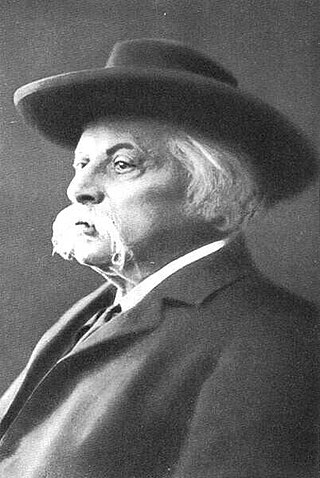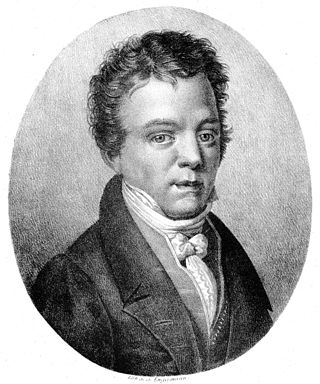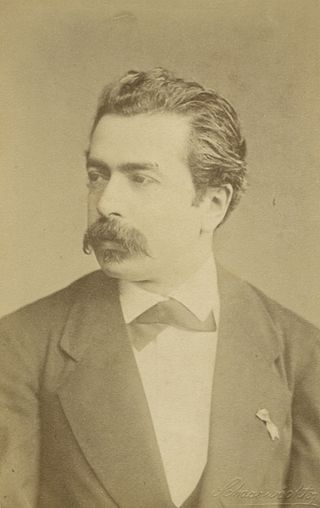A concerto is, from the late Baroque era, mostly understood as an instrumental composition, written for one or more soloists accompanied by an orchestra or other ensemble. The typical three-movement structure, a slow movement preceded and followed by fast movements, became a standard from the early 18th century.

Sonata, in music, literally means a piece played as opposed to a cantata, a piece sung. The term evolved through the history of music, designating a variety of forms until the Classical era, when it took on increasing importance. Sonata is a vague term, with varying meanings depending on the context and time period. By the early 19th century, it came to represent a principle of composing large-scale works. It was applied to most instrumental genres and regarded—alongside the fugue—as one of two fundamental methods of organizing, interpreting and analyzing concert music. Though the musical style of sonatas has changed since the Classical era, most 20th- and 21st-century sonatas still maintain the same structure.
Sonata form is a musical structure generally consisting of three main sections: an exposition, a development, and a recapitulation. It has been used widely since the middle of the 18th century.

Karl Goldmark was a Hungarian-born Viennese composer.
Paul Creston was an Italian American composer of classical music.
The Piano Quintet in F minor, Op. 34, by Johannes Brahms was completed during the summer of 1864 and published in 1865. It was dedicated to Her Royal Highness Princess Anna of Hesse. As with most piano quintets composed after Robert Schumann's Piano Quintet (1842), it is written for piano and string quartet.
In music, variation is a formal technique where material is repeated in an altered form. The changes may involve melody, rhythm, harmony, counterpoint, timbre, orchestration or any combination of these.
E major is a major scale based on E, consisting of the pitches E, F♯, G♯, A, B, C♯, and D♯. Its key signature has four sharps. Its relative minor is C-sharp minor and its parallel minor is E minor. Its enharmonic equivalent, F-flat major, has six flats and the double-flat B, which makes that key less convenient to use.
G major is a major scale based on G, with the pitches G, A, B, C, D, E, and F♯. Its key signature has one sharp. Its relative minor is E minor and its parallel minor is G minor.
D major is a major scale based on D, consisting of the pitches D, E, F♯, G, A, B, and C♯. Its key signature has two sharps. The D major scale is:
A major is a major scale based on A, with the pitches A, B, C♯, D, E, F♯, and G♯. Its key signature has three sharps. Its relative minor is F-sharp minor and its parallel minor is A minor. The key of A major is the only key where the Neapolitan sixth chord on requires both a flat and a natural accidental.
D minor is a minor scale based on D, consisting of the pitches D, E, F, G, A, B♭, and C. Its key signature has one flat. Its relative major is F major and its parallel major is D major.
F-sharp minor is a minor scale based on F♯, consisting of the pitches F♯, G♯, A, B, C♯, D, and E. Its key signature has three sharps. Its relative major is A major and its parallel major is F-sharp major.
E-flat minor is a minor scale based on E♭, consisting of the pitches E♭, F, G♭, A♭, B♭, C♭, and D♭. Its key signature consists of six flats. Its relative key is G-flat major and its parallel key is E-flat major. Its enharmonic equivalent, D-sharp minor, contains the same number of sharps.

Jan Václav Hugo Voříšek was a Czech composer, pianist, and organist.
A solo concerto is a musical form which features a single solo instrument with the melody line, accompanied by an orchestra. Traditionally, there are three movements in a solo concerto, consisting of a fast section, a slow and lyrical section, and then another fast section. However, there are many examples of concertos that do not conform to this plan.
The accordion is in a wide variety of musical genres, mainly in traditional and popular music. In some regions, such as in Europe and North America, it has become mainly restricted to traditional, folk and ethnic music. Nonetheless, the button accordion (melodeon) and the piano accordion are widely taught and played in Ireland, and have remained a steady fixture within Irish traditional music, both in Ireland and abroad, particularly in the United States and Great Britain. Numerous virtuoso Irish accordion players have recorded many albums over the past century or so; the earliest Irish music records were made in the 1920s, in New York City, by fiddler and Sligo immigrant Michael Coleman, widely considered to have paved the way for other traditional musicians to record themselves. Accordions are also played within other Celtic styles, as well as in English traditional music, American traditional music, polka, Galician folk music, and Eastern European folk music.
Musical tributes or homages from one composer to another can take many forms. Following are examples of the major types of tributes occurring in classical music. A particular work may fit into more than one of these types.

Józef Wieniawski was a Polish pianist, composer, conductor and teacher. He was born in Lublin, the younger brother of the famous violinist Henryk Wieniawski. After Franz Liszt, he was the first pianist to publicly perform all the études by Chopin. He appeared with Liszt in recitals in Paris, London, Copenhagen, Stockholm, Brussels, Leipzig and Amsterdam.

Bolero is a Spanish dance in 3/4 time popular in the late 18th and early 19th centuries. It originated from the seguidilla sometime between 1750 and 1772, and it became very popular in Madrid, La Mancha, Andalusia and Murcia in the 1780s. Bolero was performed as a solo or partner dance with a moderately slow tempo, accompanied by guitar and castanets, and with lyrics in the form of the seguidilla.




